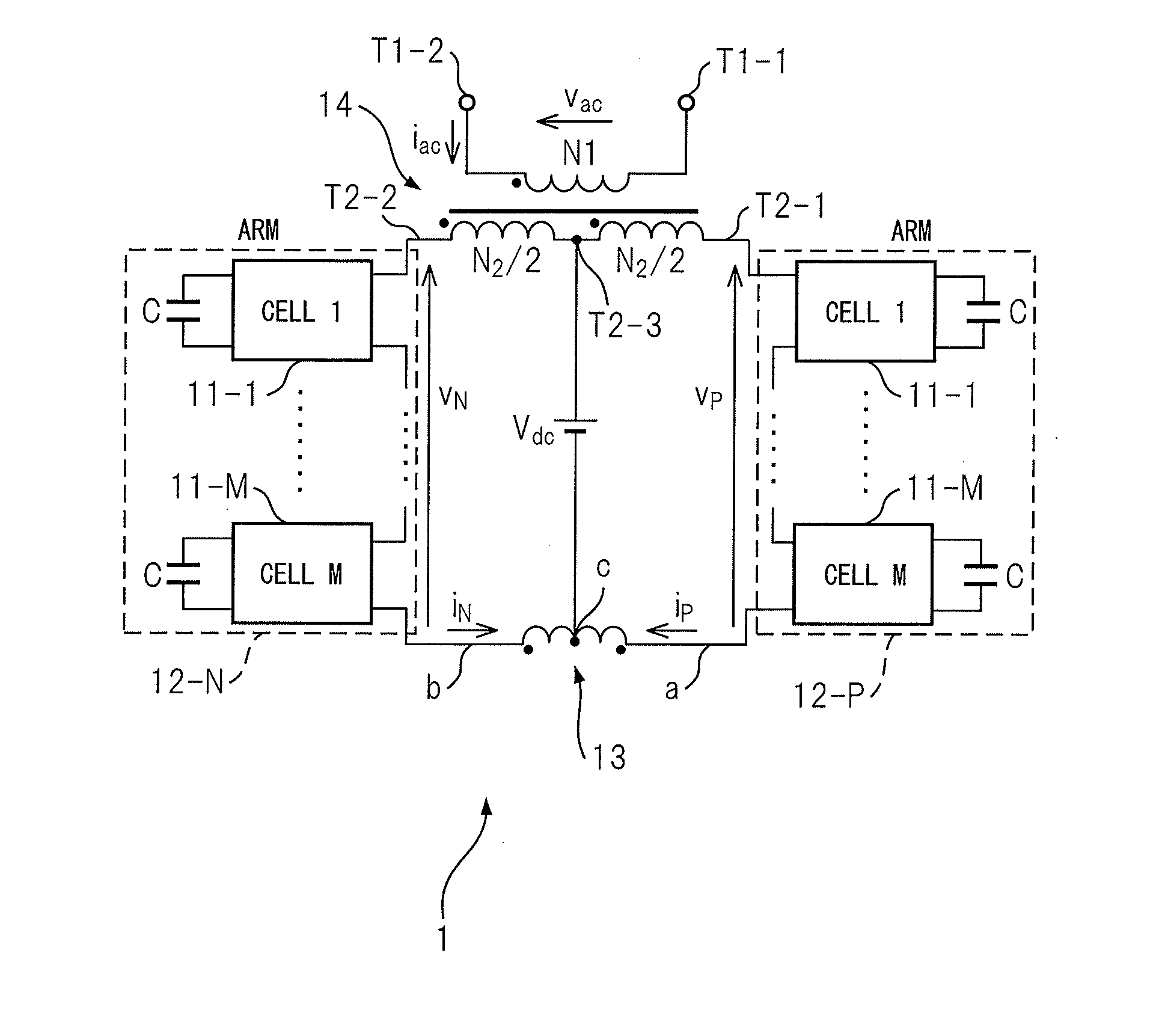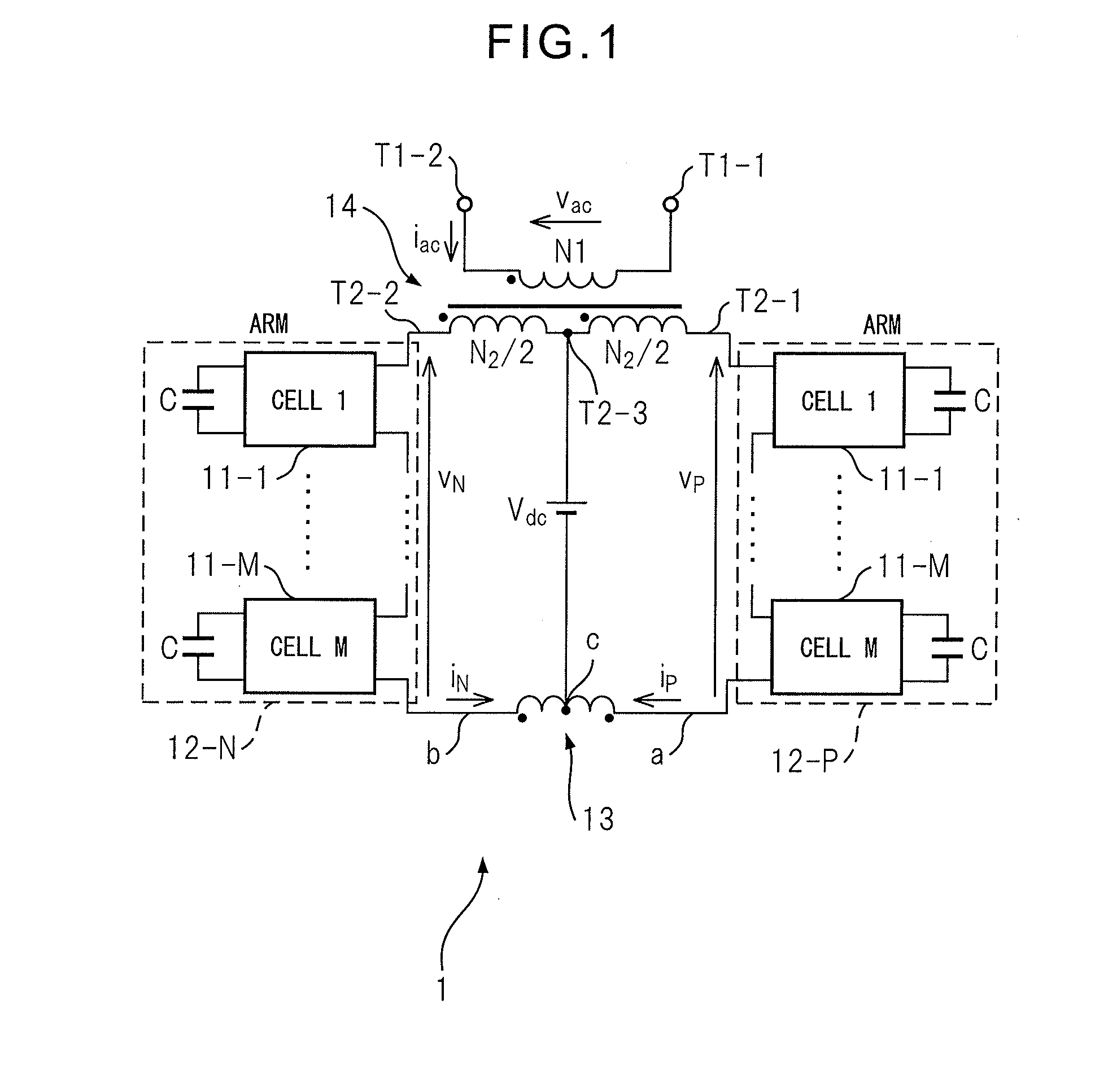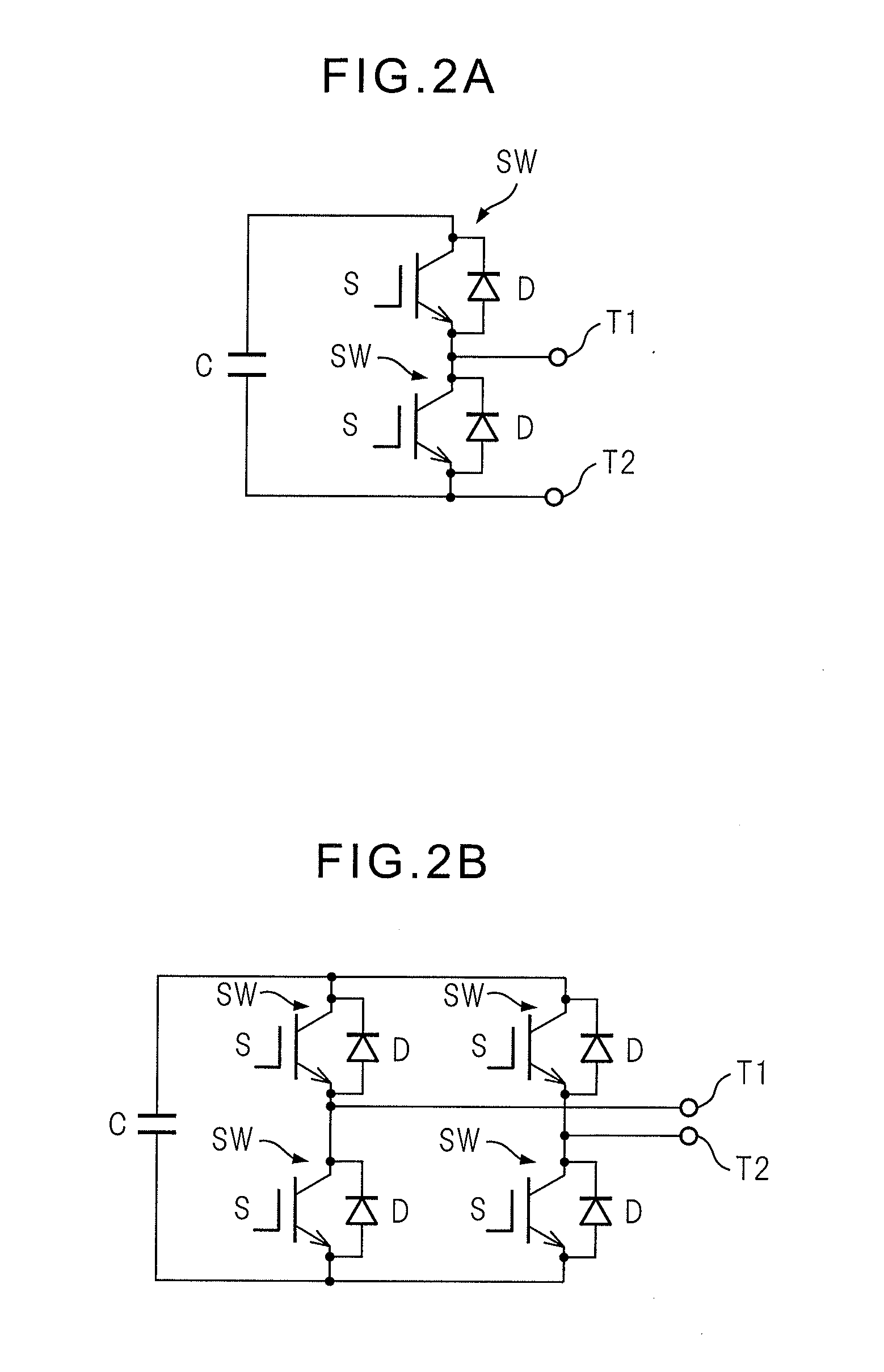Single-phase power converter, three-phase two-phase power converter, and three-phase power converter
a power converter and three-phase technology, applied in the direction of power conversion systems, ac-dc conversion, electrical equipment, etc., can solve the problems of devices being larger and heavier, and achieve the effects of simple structure, low price, and high efficiency
- Summary
- Abstract
- Description
- Claims
- Application Information
AI Technical Summary
Benefits of technology
Problems solved by technology
Method used
Image
Examples
Embodiment Construction
[0083]FIG. 1 is a circuit diagram depicting a single-phase power converter according to the first example. Hereinafter, the elements denoted by the same reference signs in different diagrams mean elements having the same functions. It should also be noted that, hereinafter, DC capacitors in the unit cells are described outside the unit cells for easy understanding. FIG. 2A is a circuit diagram depicting a chopper cell as a unit cell in the single-phase power converter according to the first to fifth examples. FIG. 2B is a circuit diagram depicting a bridge cell as a unit cell in the single-phase power converter according to the first to fifth examples.
[0084]The single-phase power converter according to the first example includes unit cells 11-1 to 11-M (where M is a natural number), a first arm 12-P, a second arm 12-N, an arm coupling unit 13, and a transformer 14.
[0085]The unit cells 11-1 to 11-M each have two semiconductor switches that are connected in series, a DC capacitor that...
PUM
 Login to View More
Login to View More Abstract
Description
Claims
Application Information
 Login to View More
Login to View More - R&D
- Intellectual Property
- Life Sciences
- Materials
- Tech Scout
- Unparalleled Data Quality
- Higher Quality Content
- 60% Fewer Hallucinations
Browse by: Latest US Patents, China's latest patents, Technical Efficacy Thesaurus, Application Domain, Technology Topic, Popular Technical Reports.
© 2025 PatSnap. All rights reserved.Legal|Privacy policy|Modern Slavery Act Transparency Statement|Sitemap|About US| Contact US: help@patsnap.com



